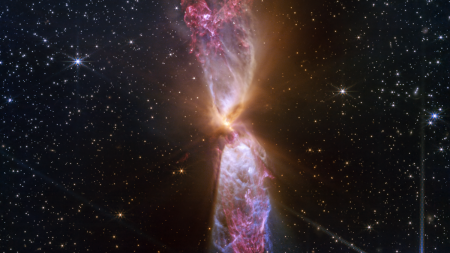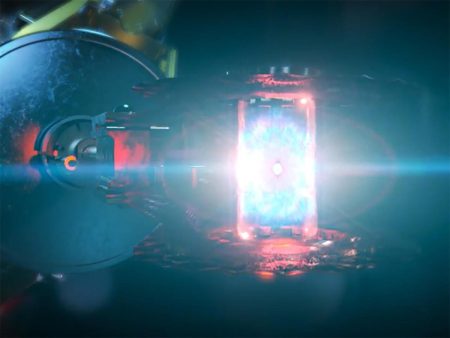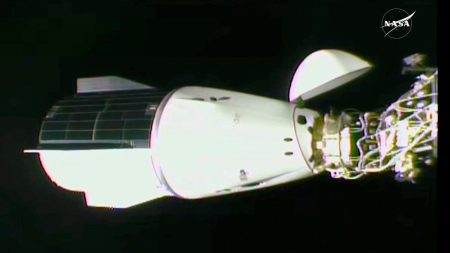A New Era of Lunar Exploration: Intuitive Machines’ IM-2 Mission
The moon is about to welcome a new wave of robotic explorers, courtesy of Intuitive Machines, a Houston-based company pushing the boundaries of lunar exploration. Later this month, SpaceX will launch IM-2, the second mission by Intuitive Machines, carrying a suite of cutting-edge payloads to the moon’s surface. This ambitious endeavor promises to uncover vital resources, test revolutionary technologies, and pave the way for future human settlements on Earth’s nearest neighbor.
Athena: The Lunar Lander Leading the Charge
At the heart of the IM-2 mission is Athena, Intuitive Machines’ second lunar lander, which is slated to touch down on a plateau near the moon’s south pole. This region is of immense scientific interest, as it is believed to hold significant deposits of water ice—a resource that could be crucial for sustaining human life and producing fuel for future missions. Athena is equipped with a suite of instruments and robots designed to explore this unforgiving yet promising environment.
The south pole’s permanently shadowed craters are particularly intriguing, as they could harbor water ice trapped in the frigid darkness for billions of years. Athena will serve as the base camp for its robotic payload, which includes a groundbreaking hopper robot named Gracie, a pioneering effort between Intuitive Machines and NASA. Gracie is named after Grace Hopper, a trailblazing computer scientist whose contributions laid the foundation for modern computing.
Gracie: The Moon’s First-Ever Hopper Robot
Gracie is a 77-pound (35-kilogram) robot that is set to make history as the first hopper to explore the moon. Unlike traditional rovers, which rely on wheels to traverse the lunar surface, Gracie will use thrusters to leap across the terrain. Over the course of five planned hops, the robot will test its ability to navigate extreme environments, including the depths of a permanently shadowed crater.
During its third hop, Gracie will venture into Crater H, a 65-foot-deep (20 meters) depression about 1,650 feet (500 meters) from Athena’s landing site. Equipped with a "water snooper" instrument, Gracie will scan its surroundings for signs of water and capture stunning visuals of its lunar leaps using onboard cameras. While the primary goal of this mission is to demonstrate the viability of hopper technology, Gracie’s findings could also provide invaluable insights for future lunar exploration.
To ensure communication with the hopper, Intuitive Machines will deploy Nokia’s Lunar Surface Communication System, which will establish the moon’s first-ever 4G/LTE network. This network will enable real-time data transmission and control, even when Gracie is operating in the shadows.
PRIME-1: The Quest for Water Ice
While Gracie is hopping across the lunar surface, the primary payload of the IM-2 mission will be hard at work. NASA’s Polar Resources Ice Mining Experiment 1 (PRIME-1) is a cutting-edge instrument designed to search for water ice, a resource that is both vital for scientific research and crucial for future human exploration.
PRIME-1 consists of two key components: a drill capable of extracting samples from up to 3.3 feet (1 meter) underground and a mass spectrometer that will analyze these samples for water and other compounds. The data collected by PRIME-1 will help scientists better understand the distribution and accessibility of water ice on the moon, a critical step in planning for long-term lunar missions.
MAPP and AstroAnt: Small but Mighty Explorers
In addition to Gracie and PRIME-1, Athena will carry two more robotic companions to the moon: MAPP (Mobile Autonomous Prospecting Platform) and AstroAnt. Developed by Lunar Outpost, a Colorado-based company, MAPP is a 22-pound (10-kilogram) rover equipped with high-resolution cameras and thermal imaging tools. These instruments will allow scientists to create detailed 3D maps of the lunar terrain, providing a wealth of information about the moon’s geology and environment.
MAPP will also collect samples of lunar regolith, the loose, fragmented rock that covers the moon’s surface, as part of a contract with NASA. And perched atop MAPP is AstroAnt, a tiny swarm robot developed by the Massachusetts Institute of Technology (MIT). Weighing just 17.6 ounces (498 grams), AstroAnt is equipped with magnetic wheels that will keep it securely attached to MAPP as it explores the lunar surface. AstroAnt’s primary mission is to gather temperature data, but it also serves as a prototype for future swarm robotics that could play a key role in lunar and planetary exploration.
Yaoki: Japan’s Contribution to Lunar Exploration
Rounding out Athena’s payload is Yaoki, a small rover developed by the Japanese company Dymon. Weighing just under 17.6 ounces (498 grams), Yaoki is designed to test innovative technologies that could be used in future lunar missions. Though details about its specific mission are scarce, Yaoki represents the growing international collaboration that is driving the next generation of space exploration.
The Bigger Picture: Paving the Way for the Future
Athena is the second mission in Intuitive Machines’ ambitious lunar exploration program, following the historic success of its debut mission, IM-1, which became the first privately built spacecraft to achieve a soft landing on the moon. While IM-1’s Odysseus lander encountered some challenges, including a broken landing leg, its successful touchdown marked a major milestone for private space companies.
The IM-2 mission, with its payload of cutting-edge robots and instruments, builds on this success and pushes the envelope even further. By prospecting for water ice, testing new mobility technologies, and establishing vital communication networks, the Athena mission is laying the groundwork for a sustainable human presence on the moon.
With IM-2 set to touch down on March 6, the next chapter in lunar exploration is just around the corner. Whether it’s through hopper robots, drills, or tiny rovers, the robots being sent to the moon today are paving the way for the astronauts of tomorrow. And as the world watches, one thing is clear: the moon is no longer just a destination—it’s a gateway to a new era of space exploration.









